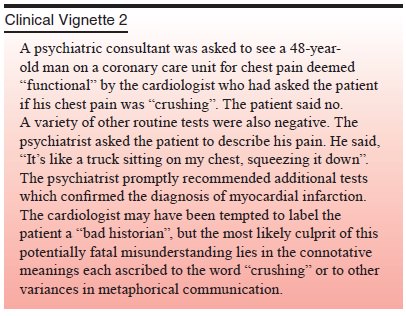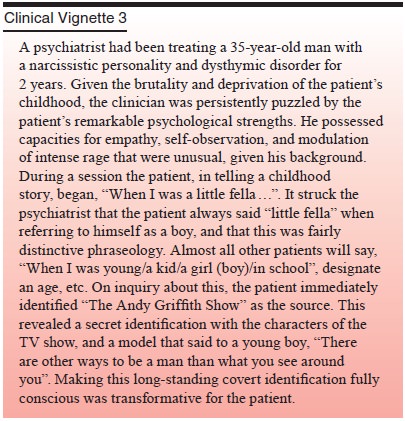Chapter: Essentials of Psychiatry: Listening to the Patient
The Primary Tools: Words, Analogies, Metaphors, Similes and Symbols
The Primary
Tools: Words, Analogies, Metaphors, Similes and Symbols
To listen and understand requires that the language
used between the speaker and the hearer be shared – that the mean-ings of words
and phrases are commonly held. Common language is the predominant factor in the
social organization of humanity (Chomsky, 1972) and is probably the single most
im-portant key to the establishment of an active listener/engaged sto-ryteller
dyad which the helping alliance represents. Indeed, the Sapir–Whorf hypothesis
suggests that what we are able to think is limited/determined by the language
with which we are working (Carroll and Whorf, 1956; Sapir, 2000). Patients are
storytellers who have the hope of being heard and understood (Edelson, 1993).
Their hearers are physicians who expect to listen actively and to be with the
patient in a new level of understanding. Because all human beings listen to so
many different people every day, we tend to think of listening as an automatic
ongoing process, yet this sort of active listening remains one of the central
skills in clinical psychiatry. It underpins all other skills in diagnosis,
alli-ance building and communication. In all medical examinations, the patient
is telling a story only she or he has experienced. The physician must glean the
salient information and then use it in appropriate ways. Inevitably, even when
language is common, there are subtle differences in meanings, based upon
differences in gender, age, culture, religion, socioeconomic class, race,
re-gion of upbringing, nationality and original language, as well as the idiosyncrasies
of individual history. These differences are particularly important to keep in
mind in the use of analogies, similes and metaphors. Figures of speech, in
which one thing is held representational of another by comparison, are very
impor-tant windows to the inner world of the patient. Differences in meanings
attached to these figures of speech can complicate their use. In psychodynamic
assessment and psychotherapeutic treat-ment, the need to regard these
subtleties of language becomes the self-conscious focus of the psychiatrist,
yet failure to hear and heed such idiosyncratic distinctions can affect simple
medical diagnosis as well.

In psychotherapy, the special meanings of words
become the central focus of the treatment.

Related Topics